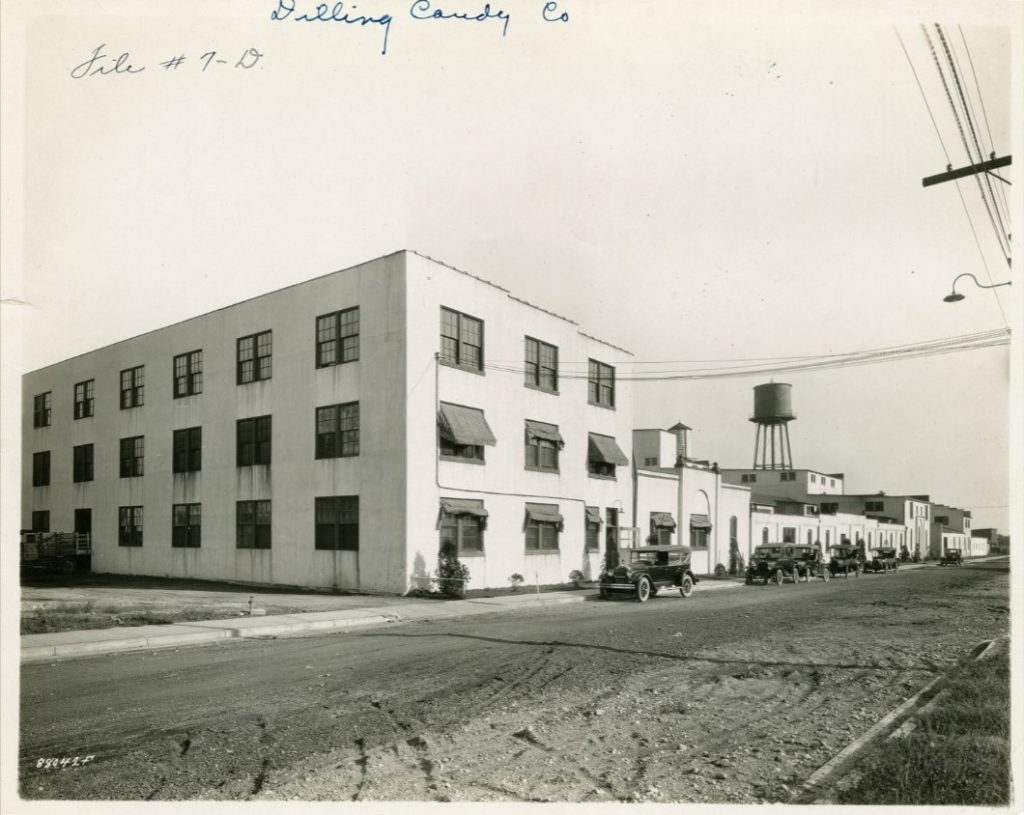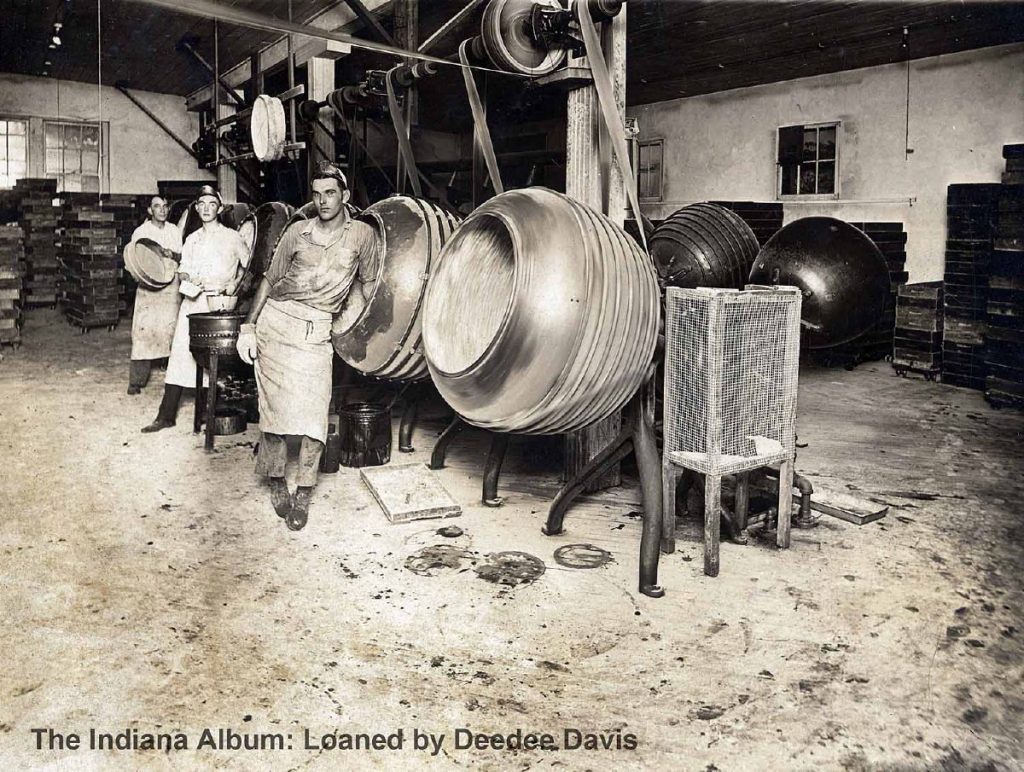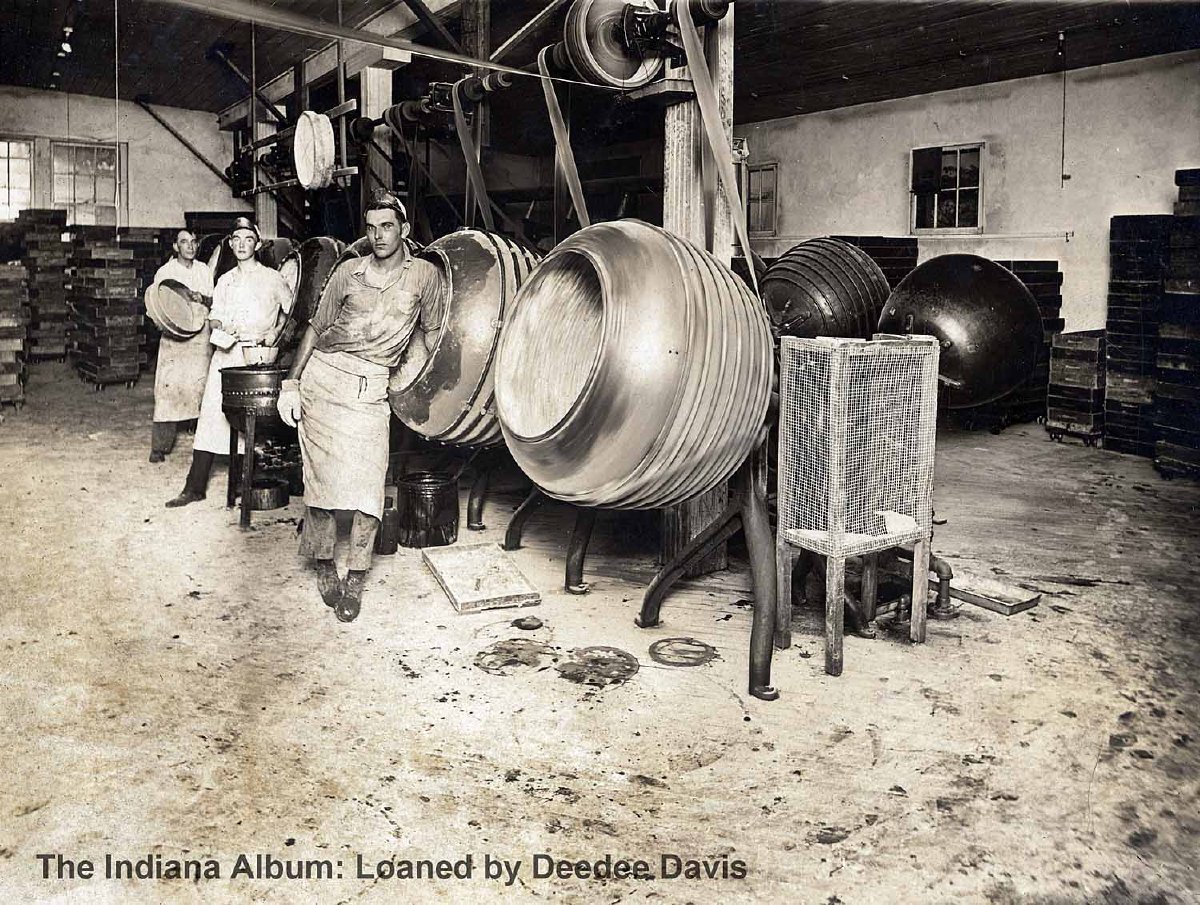In 1887 Frank Dilling founded the Dilling Candy Company in Marion, Indiana. The company specialized in butterscotch candy, using a recipe Dilling had previously developed while working as a baker.
Dilling moved the company to Indianapolis and incorporated it in 1905. The move near the intersection of South and Senate streets allowed for an increase in production capacity, a development that required the hire of 200 workers. Near the end of , Dilling purchased 23 acres south of Morris Street along the , a site previously owned by the where he constructed new manufacturing facilities in 1921. The new structure, in addition to the three existing structures left from the National Starch operations resulted in Dilling’s new base for operations. To access the property, Dilling constructed a new road called Chocolate Avenue.

Dilling’s plans called for a Chocolate Village adjacent to the company’s factory. Construction of modern homes built of white stucco with “chocolate” finishes would house workers and their families. However, the City of Indianapolis had competing plans for the area that ultimately derailed Dilling’s dream. The city built a roadway known as White River Boulevard East.
By 1924 the Dilling Chocolate Company employed nearly 300 workers. Around the same time, Dilling established the Dilling Paper Box Company next to the candy factories, which employed 50 more workers.
Operating under the slogan, “If it’s Dilling, It’s Pure,” the company produced a wide variety of candy and chocolate products and was one of the largest confectionaries in the city. The company also had several branch offices in cities and towns across Indiana and exported its products nationally and globally. One of its trademarks was the “Harp” brand chocolates, likely a nod to Dilling’s daughter Mildred, who was an internationally renowned harpist.

Frank Dilling passed away in 1936; he had retired from the company several years earlier. The onset of in 1941 challenged the candy company, which continued using Dilling’s name. Wartime rationing hit the candy industry hard, forcing Dilling to operate with reduced sugar and cocoa supplies due to a redirection of these ingredients for war-related uses, sugar and coca markets existing in conflict zones, and the hazards of wartime shipping.
But by 1943 the outlook for the Allies improved and new sources of sugar and cocoa were found, namely from Cuba and Puerto Rico. Dilling took advantage of these events by seeking additional workers at its factory and planning for the implementation of a new mechanized candy-producing process; however, the company abruptly shuttered operations in 1946.
A strike in late January of 1946 preceded the shutdown. Employees established a picket line on Chocolate Avenue where they complained of “undesirable working conditions.” Wages were not one of the workers’ grievances. The candy factory continued producing candy through the strike, but shipments halted. Company president, Eddie Dowling announced the possibilities of merging with another company or complete dissolution of Dilling. On April 6, 1948, the company announced it would liquidate its assets after negotiations with a national candy company collapsed.
In March of 1949 purchased the former Dilling Candy Company property. The pharmaceutical company planned for additional warehouse and storage space between Lilly’s headquarters south of downtown, and new production operations on the westside of the White River.
The original buildings at the site remained in place for several years, with Lilly using at least a portion of the complex for warehouse space. However, by the early 1960’s Lilly constructed a new warehouse complex on the site. The last vestiges of Dilling and Chocolate Avenue disappeared under the warehouse complex.
FURTHER READING
- Cierzniak, Libby. “Indianapolis Collected: Every Day should be Candy Day.” Historic Indianapolis, March 2, 2013. https://historicindianapolis.com/indianapolis-collected-every-day-should-be-candy-day/.
- The author adapted this EOI entry from their original article:
- Fujawa, Ed. “Sweetest Street in Indianapolis: Chocolate Avenue and the Dilling Candy Company.” Class 900: Indianapolis, July 31, 2023. https://www.class900indy.com/post/sweetest-street-in-indianapolis-chocolate-avenue-and-the-dilling-candy-company.
CITE THIS ENTRY
APA:
Fujawa, E. (2024). Dilling Candy Company. Encyclopedia of Indianapolis. Retrieved Jan 6, 2026, from https://indyencyclopedia.org/dilling-candy-company/.
MLA:
Fujawa, Ed. “Dilling Candy Company.” Encyclopedia of Indianapolis, 2024, https://indyencyclopedia.org/dilling-candy-company/. Accessed 6 Jan 2026.
Chicago:
Fujawa, Ed. “Dilling Candy Company.” Encyclopedia of Indianapolis, 2024. Accessed Jan 6, 2026. https://indyencyclopedia.org/dilling-candy-company/.

Help improve this entry
Contribute information, offer corrections, suggest images.
You can also recommend new entries related to this topic.
